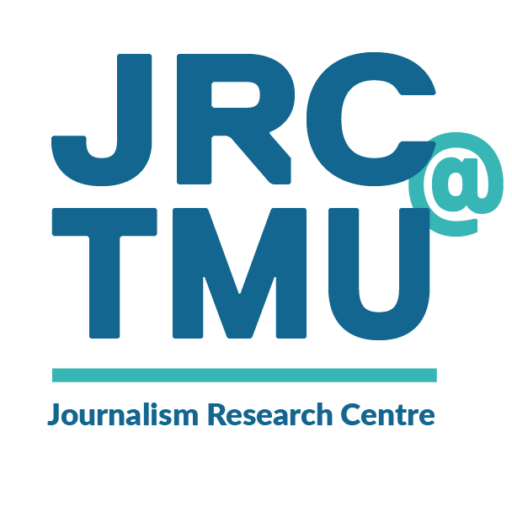By AMANDA POPE
Staff reporter
April 13, 2018

Gay men living with HIV/AIDS were underrepresented and often portrayed in a negative light by Toronto mainstream newspapers covering the early years of the health crisis, according to a new study.
The research paper by Ryerson University master of journalism student Michael D’Alimonte also suggests that the Toronto Star and the Globe and Mail were too eager to publish scientifically dubious findings during the early years of the crisis in the 1980s.
“The (research) paper is a lesson on reporting on an emerging health crisis,” said D’Alimonte, whose paper has been accepted for presentation at the Canadian Communication Association meeting this spring. “Reporters can’t just take official sources at their word. They have to question things and reporters need to go into these at-risk groups and make connections to get the insiders perspective rather than taking an outsiders approach and reporting from there.”
D’Alimonte, who is completing his final year in the master of journalism program, compared the AIDS coverage by the two mainstream papers to reporting by The Body Politic, a monthly that billed itself as a “gay liberation newspaper.” He found substantial differences.
The Body Politic, he said, was more more likely to question early research claims that AIDS can be spread by casual contact – a claim that turned out to be false. Gay men living with AIDS were also given a voice in the publication’s coverage more frequently than in mainstream publications.
D’Alimonte’s content analysis also revealed that when AIDS was first recognized as a public health issue, The Body Politic reported more extensively on developments and also played the role of an advocate, adopting a critical perspective on AIDS as a social and public health issue, he said.
D’Alimonte said he decided to investigate news coverage of the early years of the AIDS epidemic after having a partner who was diagnosed as HIV-positive. He became more aware of the stigma faced by people who are HIV-positive, he said, when his partner encountered immigration difficulties moving from the United States to Canada.
“This got me interested in where all of this stigma came from,” D’Alimonte said. “As a queer male, I never learned about any of that stuff in school, so I took it upon myself to learn about the AIDS epidemic and also about that period of time in a Toronto context. Not a lot of people are aware that a lot of the activism surrounding AIDS was centred in Toronto.”
The paper, AIDS Coverage By Three Toronto-Based Print News Publications, examines AIDS coverage by the three news outlets in Toronto from 1981, when it was first reported on, to 1987.
In his analysis, D’Alimonte, 26, investigated the extent to which the newspapers focused on people who were diagnosed with AIDS and were ill rather than stories of healthy HIV-positive individuals. He examined how frequently AIDS stories appeared in the newspapers and the significance of word choice and terminology. Use of the term “plague,” he noted, implied that gay men with AIDS were deserving of their affliction because they were sexually deviant. The study also looked at where AIDS-related stories appeared in the publications and the types of sources quoted.
D’Alimonte said he wanted to see if the Toronto coverage mirrored patterns of early AIDS reporting in the United States, where researchers have divided the coverage into four distinct “eras.” He found that in the initial era from from June 1981, when the first AIDS cases were reported, to April 1983, the Star and the Globe virtually ignored the issue.
The Globe published just one article related to AIDS, a 1981 story titled “Young gays sensitive to rare cancer: study.” The article focused on Kaposi’s sarcoma, the “rare cancer” alluded to in the title, and featured only scientific sources. Individuals with the disease were nowhere in the story. Both the title and the lede of the piece connect this rare cancer to the gay male community, but no real explanation was provided for this link.
The Toronto Star, meanwhile, did not publish its first AIDS-related story until November 1982 when it a piece ran under the headline “Atlanta disease detectives hot on trail of ‘gay plague.’”
“Likening AIDS to a ‘gay plague’ makes those afflicted by the disease (who are mostly homosexuals and drug-users, as the piece points out) seem deserving of their fate,” D’Alimonte wrote in the research paper. “Drug-users and homosexuals, already seen as deviants in the public eye at the time, are being punished by God. That is, at least, what the language used implicitly suggests.”
The two mainstream newspapers may not have felt a sense of urgency to report on AIDS, D’Alimonte said, because their team and audience were outside of the community at risk: “No matter what the circumstance is,” he said, “it is always easy to point fingers. We are born in a way that makes the one group as the ‘other’ when you’re not a part of that community. During this time period, there was a lot of research and early reporting saying that the gay community is the reason why this disease is expanding.”
During the subsequent “Science Era,” from the spring of 1983 until June 1985, American journalists relied on scientific, academic sources in their reporting, and the Canadian newspapers did as well. The Globe and the Star would instantly write about new AIDS-related research, D’Alimonte said, and that occasionally led to the dissemination of misleading information.
The Body Politic, D’Alimonte said in an interview, took more cautious approach: “(Its) writers realized that what they wrote would influence how people thought,” he said, “especially when they are coming from their own community. They knew they shouldn’t just take information and report it out as soon as they got it.”
The publication went beyond simply disseminating information, D’Alimonte said, and worked to offer guidance to its readers, pointing out what information may be accurate, what may be false and where they could find out more.
Following the AIDS-related death of Rock Hudson in 1985, the general population became interested and concerned about AIDS, and both Canadian papers dramatically increased coverage. During the so-called Human Era of news coverage between July 1985 to January 1987, D’Alimonte found that the Globe and the Star did a better job of humanizing the disease, drawing upon people affected within the queer community as well as other at-risk groups as sources.
The Body Politic ceased publication in 1987, the same year AIDS coverage took off in the mainstream media during what is known as the Political Era of coverage. By that point, D’Alimonte said, AIDS became a major news topic – a public health issue the general population wanted to know more about. After publishing just 73 stories in 1986, the Globe and Mail carried 236 AIDS-related stories in 1987. The number of stories in the Star increased to 146 in 1987, up from 56 in 1986
D’Alimonte said he hopes his research paper will inform millennials of what happened during the AIDS epidemic and the legacy of it.
